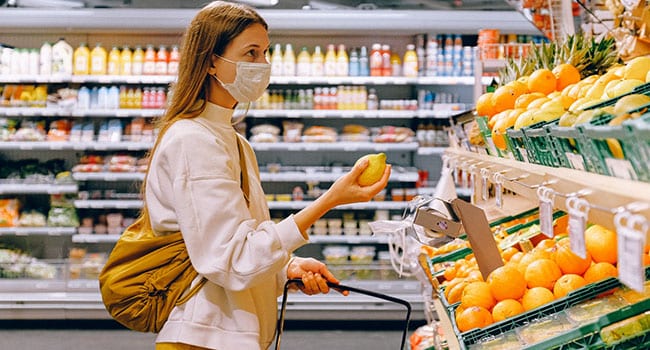 More than five months into the pandemic, we can start to see how life will look on the other side. At the grocery store, some changes will disappear while others will stay with us for the foreseeable future.
More than five months into the pandemic, we can start to see how life will look on the other side. At the grocery store, some changes will disappear while others will stay with us for the foreseeable future.
Food is getting more expensive everywhere, including Canada. We expect prices to increase by four per cent. Additional costs these days are too much to absorb for farmers, processors and distributors.
Financial results were impressive for the first few quarters, to be sure, but sunny days for food companies won’t last. Many companies are pivoting and trying to reach consumers who are looking for new options.
The food-service industry is barely at 60 per cent of what it was before COVID-19.
But things are starting to pick up and consumers are finding new ways to get food by adopting fresh habits.
Prices for products like beef have gone up by as much as 20 per cent since January. Some factors have nothing to do with the pandemic, but COVID-19 unquestionably didn’t make things easier for financially insecure consumers.
Food security was a challenge in Canada even before COVID-19 and the pandemic has made matters worse. The ratio of Canadians who have experienced food insecurity at least once in the last 12 months went from one in eight to one in seven. That means almost 700,000 more Canadians have now experienced food insecurity.
That’s why organizations like Second Harvest and Food Banks Canada play such a critical role. No government programs, not even the Canadian Emergency Response Benefit (CERB), can help Canadians so quickly. And given that CERB will end in September, we desperately need food rescuing for those in need.
Perishables are more in fashion since we spend more time in the kitchen. Staying at home will result in consumers processing their food more often. Non-perishables were highly popular at the start of the pandemic, but consumers got more acquainted with ingredients they can cook in recent months. With more people working from home, or from anywhere but work really, we expect to see more consumers buying fresh more often.
This is bad news for the brand companies you find in the middle of the grocery store. Portfolios are likely to shrink and less choice will be offered to consumers in months to come. Carrying more than 39,000 food items in one store can be expensive, so ‘less is more’ will be grocers’ new motto. And who needs Twinkie-flavoured milk, really? (Yes, it exists.)
Another massive change is online food purchasing. In just five months, we’ve seen many markets in Canada go from being severely under-served to being offered several options. Liquor stores, specialty stores and, of course, mainstream grocers are delivering food within hours, sometimes even faster.
It’s now normal to let a stranger pick your food. If you live in a city of over 200,000 inhabitants in Canada, it’s also very reasonable to expect your online order to be delivered within two hours, with little or no substitutions. That’s the new benchmark.
Instacart, Voilà by Sobeys and Longo’s in Ontario are all looking at new standards and expectations. Orders are being fulfilled with accuracy rates higher than 95 per cent.
In 2017, grocers got their wake-up call when Amazon acquired Whole Foods. But still these grocers barely committed to online delivery. We saw the timid emergence of clicks and collects everywhere, which was nowhere near good enough for pandemic-stricken households.
Now, the online game is on. Of all food sales, online purchases were under two per cent before the pandemic. But by the end of this year, online food sales could reach almost four per cent. Canada is catching up – the United States is at seven per cent while the United Kingdom is at 10 per cent.
However, if you do order online, expect to pay more. On average, including delivery fees, consumers will pay seven to 10 per cent more for delivered food compared to a regular visit to the grocery store.
That’s quite a difference and is perhaps problematic for those who are stuck at home, for one reason or another. The disabled, elderly and people in self-isolation are compelled to pay more.
That may seem unfair, but the socio-economics of home food delivery will evolve and likely become more competitive.
As for the glass barriers, arrows on the floor, masks and cart-cleaning staff, they will go away. Maybe. Eventually.
Dr. Sylvain Charlebois is senior director of the agri-food analytics lab and a professor in food distribution and policy at Dalhousie University.
Sylvain is a Troy Media Thought Leader. Why aren’t you?
The views, opinions and positions expressed by columnists and contributors are the author’s alone. They do not inherently or expressly reflect the views, opinions and/or positions of our publication.

